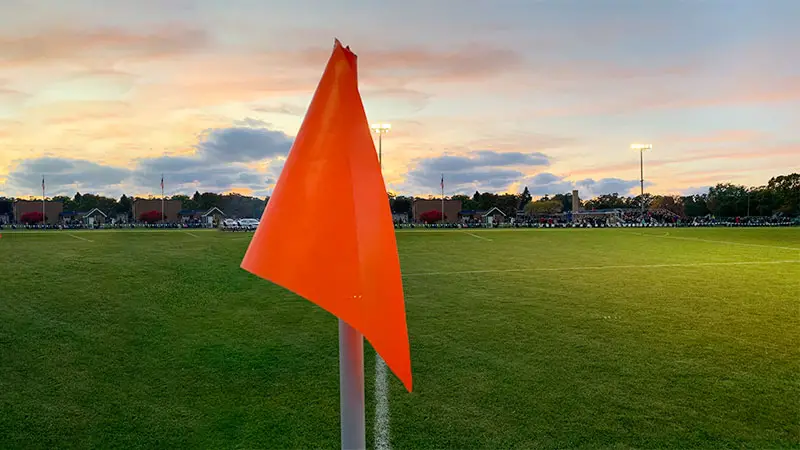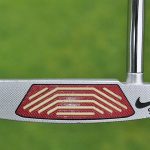Soccer corner flags might seem like minor details on the field, but they play a crucial role in the game. These flags mark the corners of the field, guiding players and ensuring the game’s smooth flow.
Whether you’re setting up a professional match or a casual game, choosing the right corner flags can make a significant difference.
From no-spike designs perfect for turf fields to durable rubber bases that withstand intense play, there’s a variety of options available. For instance, the Soccer Innovations Corner Flag with an 8-pound rubber base offers stability and durability, making it a top choice for many.
Understanding the features and benefits of different corner flags helps in selecting the best fit for your needs.
Significance of Soccer Corner Flags
Soccer corner flags define field boundaries and guide players, referees, and spectators. Their presence ensures that the game runs within designated parameters.
Role in Game Play
Corner flags mark the corners of the field. They signify where the field ends, helping referees, players, and fans visualize the playing area. During a corner kick, players use the flag as a reference point to place the ball within the quarter-circle.
This simple element improves the overall structure and flow of the game, contributing to fair play and strategy.
Regulations and Standards
Soccer corner flags adhere to specific regulations. According to FIFA, flags must be at least 5 feet (1.5 meters) high and made from non-dangerous materials. The poles should not exceed a specific diameter, usually around 1 inch (25mm), to prevent injury if players collide with them.
Flags need to be brightly colored to ensure visibility under all conditions. Adhering to these standards ensures the safety and efficiency of the game.
Types of Soccer Corner Flags
Soccer corner flags vary by material, design, and customization options to suit different field conditions and team preferences.
Standard Flags
Standard corner flags are primarily made from traditional nylon or polyester materials. Their main attributes include water resistance and durability, important for enduring various weather conditions.
Common colors for these flags are red, navy, royal, black, charcoal, forest, and maroon. They typically come with metal or plastic poles, often fitting a standard diameter of 25mm (1 inch).
A popular example is the Orange Fiberglass Soccer Corner Flag, featuring strong but flexible materials to withstand impacts during games.
Customizable Flags
Customizable corner flags offer personalization with team logos, sponsor names, or tournament branding. These flags use higher-end materials like 600D waterproof MVP stadium shelter polyester, providing superior quality and resilience.
Options for custom flags include single or double-sided prints, choice of colors, and logo placement. Customization requires vector artwork files such as AI, EPS, or SVG, and there’s often a fee for vectorizing artwork.
The minimum order quantity usually sits at four flags per design, ensuring uniformity across the field. Custom flag orders have lead times, typically around 14 business days after artwork approval and payment processing.
Choosing the Right Corner Flags
Selecting the right corner flags involves considering various factors such as material, durability, visibility, and design.
Material and Durability
High-quality materials like nylon and polyester offer enhanced durability. Nylon corner flags are long-lasting and resilient, resisting tearing and fraying.
Polyester options, particularly the 600D waterproof MVP stadium shelter material, withstand harsh weather conditions. These materials ensure the flags remain functional and intact throughout multiple seasons.
Visibility and Design
Visibility is crucial for corner flags. Flags must be vividly colored and easily noticeable on the field. Standard colors like red with white tips and custom colors like black, charcoal, and maroon enhance game visibility.
Customizable flags with team logos and sponsor names add a personalized touch. Using high-visibility materials helps players, coaches, and officials quickly pinpoint field boundaries.
Maintenance and Storage Tips for Corner Flags
Proper maintenance and storage are vital for extending the life of soccer corner flags. Following these tips ensures they remain functional and vibrant throughout their usage.
Cleaning and Care
Regular cleaning helps maintain the appearance and durability of corner flags. Use a mild detergent and water to clean the flag fabric. Avoid harsh chemicals that can damage the material.
For fiberglass poles, wipe them down with a damp cloth to remove dirt and grime. Regularly inspect for damages, such as tears or color fading, and repair or replace as necessary to keep the flags in optimal condition.
Proper Storage Practices
Proper storage protects corner flags from damage. Store flags in a dry, cool place to prevent moisture buildup that can lead to mildew or material degradation. Use protective covers for both the fabric and poles to prevent dust and physical damage.
When not in use, disassemble flags and store the components separately to avoid bending or breaking the poles. Regularly check storage conditions to ensure they remain optimal for preserving the flags’ integrity.
Frequently Asked Questions
Why are corner flags important in soccer?
Corner flags are essential in soccer as they help define the field boundaries, guide players during corner kicks, and assist referees in making accurate decisions. They also enhance the visibility of field corners for spectators.
What are the standard specifications for soccer corner flags?
According to FIFA regulations, corner flags must be at least 5 feet (1.5 meters) tall and made of a non-pointed top. They are usually placed at each corner of the soccer field.
What material is best for corner flags?
Nylon and polyester are commonly used materials for corner flags due to their durability and ability to withstand various weather conditions.
Can corner flags be customized?
Yes, many manufacturers offer customizable corner flags where you can add team logos or sponsor names for personalization.
How do you maintain and store corner flags?
Regularly clean corner flags with mild detergent and water. Ensure they are dry before storing them in a cool, dry place to prevent damage and prolong their durability. Inspect them periodically for any wear and tear.
Conclusion
Soccer corner flags are essential for defining field boundaries and facilitating smooth matches. Adhering to FIFA regulations and selecting appropriate, durable materials can improve the game experience.
Regular maintenance and understanding weather impacts are crucial for longevity, while investing in quality flags prevents frequent replacements and maintains professionalism.
Customizable flags with team logos can also boost team spirit and aesthetics. Proper use of corner flags ensures compliance with standards and enhances the atmosphere of soccer matches.
Additionally, ensuring proper flag placement in accordance with field dimensions contributes to fair play. Clubs can further enhance the visual appeal by choosing flags with vibrant colors and reflective materials for improved visibility during evening matches.








Brice Petersen